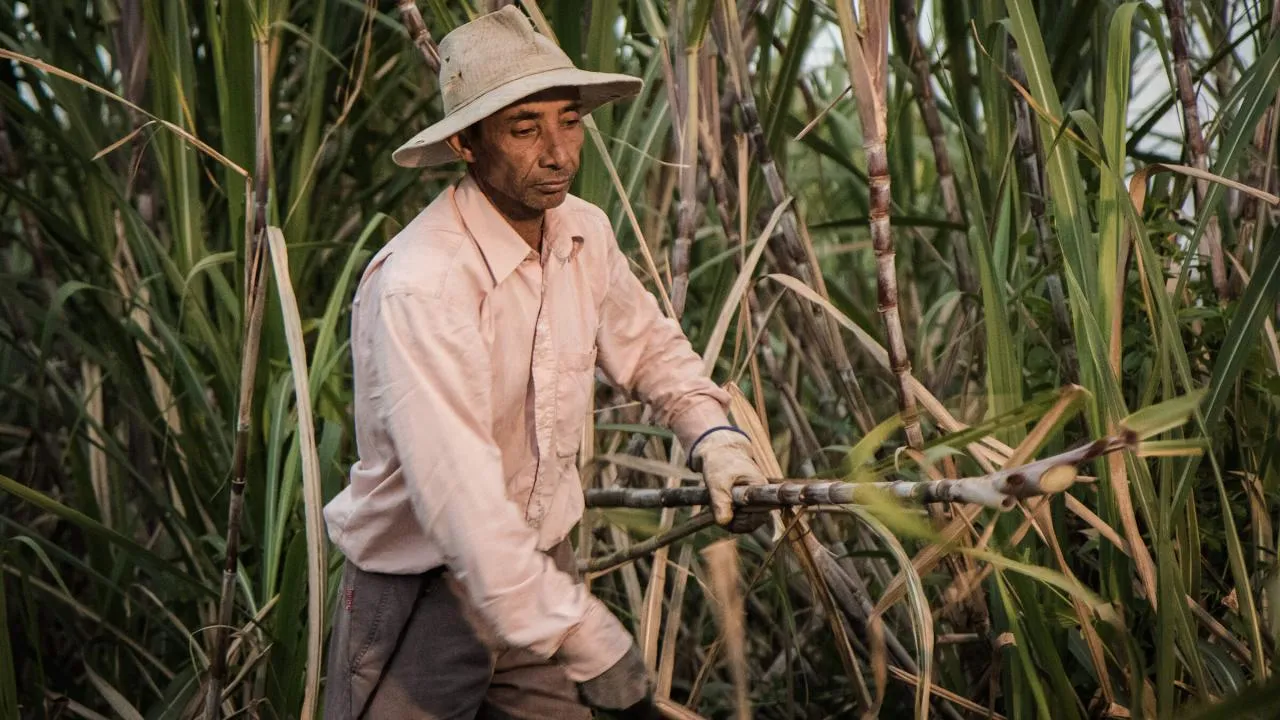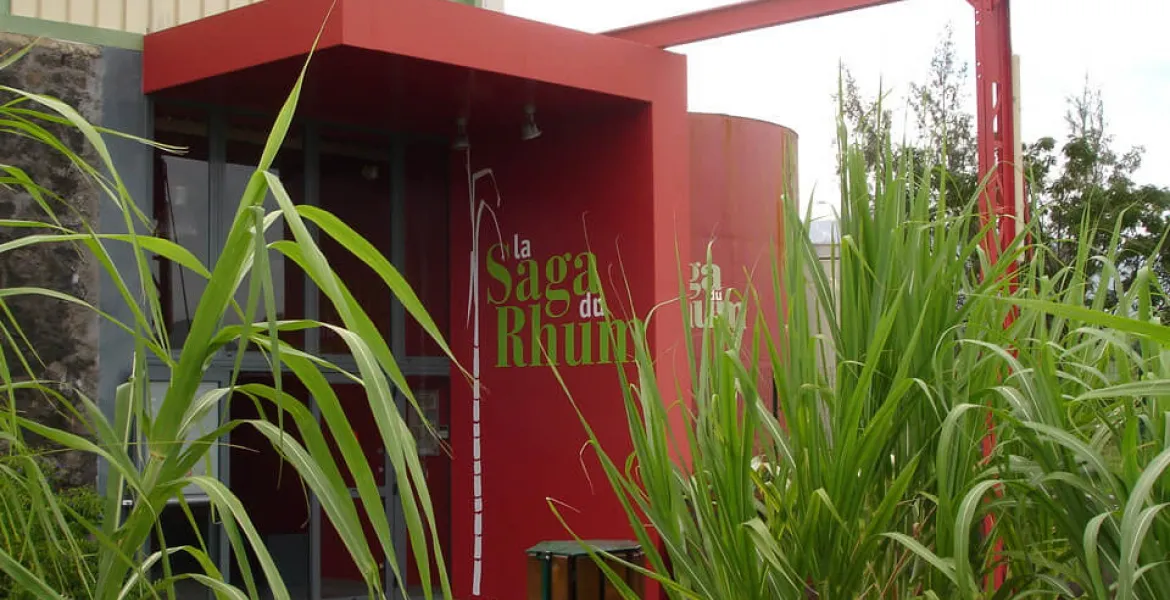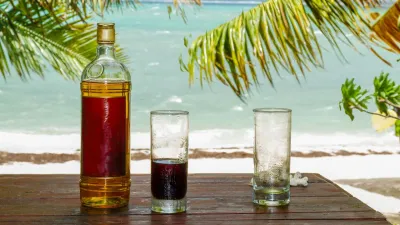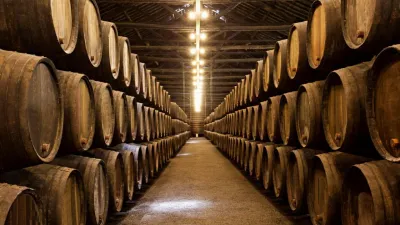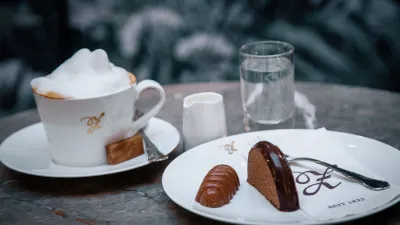Our rum walks continue on the magical island of Réunion. As a French department more than nine thousand kilometers away from France, it is practically the furthest part of the European Union. The island, spanning about 2,500 square kilometers, boasts an amazing rum history.
On Réunion, you will find three distilleries: the Savanna Distillery, the Isautier Distillery, and the Rivière du Mat Distillery. We'll be particularly interested in the first two. So pour yourself a glass of the excellent Isautier 7 Y.O. rum and take a walk with us through the distilleries of this increasingly popular island while enjoying its rich and full-bodied flavor.
The roots of rum on Réunion date back to the 17th century when the first sugar cane fields were planted here. Sugar cane is one of the island's main exports alongside sugar and vanilla. The French colonialists helped establish it here, creating an incredibly strong legacy. It has survived for centuries, but it has not been easy. Gradually, sugar cane cultivation spread throughout the island. In 1848, slavery was abolished on the island, leading to a decline in sugar and rum production. However, rum production has gradually recovered on the island, and today Réunion produces a number of excellent rums. The rums Isautier, Savanna, and Rivière du Mât are renowned for their quality and excellent taste, making them popular with rum connoisseurs around the world.
In Réunion, you can find two types of rum. The first is the original agricultural or agricole rum - made directly from sugar cane juice. The second is traditional rum, also known as industrial rum, which is made from the molasses produced during sugar production. Aged rum, which is highly prized by connoisseurs, is typically served neat as an aperitif or digestif, while white and unaged rum is ideal for cocktails such as Mojitos and Daiquiris. It is also found in rum liqueurs, in which various fruits are macerated. These are called Arrangé rums and can be described as a local phenomenon. You will also find this white rum in the kitchen, where it is good to have on hand to flavor certain dishes, cakes, and pancakes, or, for example, to make flambéed bananas.
The distilleries on Réunion Island are open to the public and offer tours of their premises during the cane harvest season, from July to December. Such a visit is a must, not only for rum connoisseurs but for anyone who wants to learn how the famous local rum is made. For an even more immersive experience, in Saint-Pierre, the oldest family-run distillery on the island, you can visit La Saga du Rhum, the only rum museum in Réunion. Housed right in the Isautier Distillery, the Saga takes you on a journey through history and culture, plus there's a section that tests visitors' sensory skills.
Top Quality and Taste Guaranteed
The rums produced in Réunion are prized by experts for their quality and taste. Several factors contribute to this.
Firstly, the climatic conditions on Réunion are ideal for growing sugar cane. The French knew this in the 17th century, and we know it today. Sunshine, warm weather, and sufficient rainfall are essential for the growth of sugar cane, and Réunion has all these in abundance.
Secondly, the long history of rum production and the experience of the local distillers mean that rum producers in Réunion have developed techniques and processes that have been passed down through generations, guaranteeing a quality product.
Thirdly, rum production in Réunion is governed by strict norms and standards. For example, rums that are labeled as Rhum de la Réunion must be produced exclusively on Réunion and must be made using only local ingredients. This means that rums produced in Réunion are fully controlled and guaranteed for their quality.
Lastly, as already mentioned, the breadth of the island's rum portfolio guarantees its popularity. Customers can easily find the rum that best suits their tastes. The quality, flavor, and unique character of the rums form an important part of the local culture and certainly the economy.
The Magic of the Cellars by the Ocean
One notable example is the cellars of the Savanna Distillery, which are its great pride, located just a few steps from the ocean. This is where the rums of the Old Rums series are aged. Years of aging in French oak barrels and a careful selection process create a totally exceptional experience. Whether you open a rum aged nine years deep in the tropical cellars of the island, five years in cognac casks, or four years aged in French oak barrels, each time this Savanna rum will be a very unique experience.
Speaking of Savanna - it's a distiller whose portfolio, aside from the aforementioned Old Rums, definitely has something to offer both for cocktails and for enjoying rum on its own. There's a range called simply Cocktail Rums, from which one can choose either the more traditional, elegant, and full-bodied Intense 41.3, the lush, copper-column distilled Créol 52, or the very unique Lontan 57.5. The latter combines a long molasses fermentation with copper column distillation in Savalle. Incidentally, this long fermentation is something that sets Savanna rums apart from the rest.
And then there is the Limited series. Its name tells everyone what it is. Original spirits, exclusive casks, and pleasantly surprising combinations are always chosen from the best Savanna rums. They have one thing in common: exceptional qualities and, secondly, they will never be repeated. Some of them you can get as single cask, others Savanna presents in unique blends for the most demanding connoisseurs.
We Choose the Rums, We Match the Rums
The team at our second distillery today, Isautier, is known among rum drinkers for its perfectionist approach to rum making. The distillery is led by master blender Marie Ferrand - one of the few women in such a prominent position within the distillery industry. Also important is the expertise of oenologist Matthieu Cosse and the savoir-faire, or know-how, of the Isautier family. All this makes Isautier rums a true symbol of local culture, an important part of the heritage of Réunion.
It's up to you which of the Isautier rums you choose to taste. If you reach for the five-year-old Isautier 5 Y.O., it will be a blend of agricole rums and traditional molasses rums that have been aged for five years in French barrels. The result is an unconventional, complex rum with delicate, fresh, floral, and fruity flavors characteristic of the island of Réunion. The aroma is fresh, bold, and balanced, with notes of sugar cane and tropical fruits, combined with hints of vanilla and oak. Upon tasting, you will be pleasantly surprised by a rounded and elegant taste with notes of vanilla and a light touch of wood, balanced by hints of citrus and spice.
On the other hand, you can pour pure molasses rum into your glass if you reach for the Isautier 7 Y.O. This is aged for seven years, first in new French casks and then in old used casks. The resulting rum is full-bodied and rich, with particularly fruity notes. Its aroma is of ripe and caramelized fruit, with citrus notes combining with lightly roasted and vanilla notes. The palate will absolutely blow you away as it will be rich, rounded, and smooth, with a perfect balance of elegant fruit notes and aromatic spices such as ginger.
And for the biggest connoisseurs, we'd recommend Isautier 10 Y.O., an agricole rum made from fresh sugar cane juice. It has been aged for more than ten years. It was first aged in new French barrels and then in old used barrels. Ten-year-old Isautier combines elegance, strength, and freshness. It is characterized by notes of fruit and spice along with the iodine notes that are typical of aged Isautier rums. Its aroma is really rich, spicy, and peppery, with hints of caramelized fruit and ripe bananas. On the palate, this rum is beautifully smooth, with a balance of fresh citrus zest and rounded vanilla notes.
Whether you choose any of Isautier's rums - white, golden, aged for varying numbers of years, or taste the rum liqueur, you are toasting to history, to the rum brand that shaped and pointed the way for rum in the region. And it is still setting the standard, now a remarkable 178 years old.

